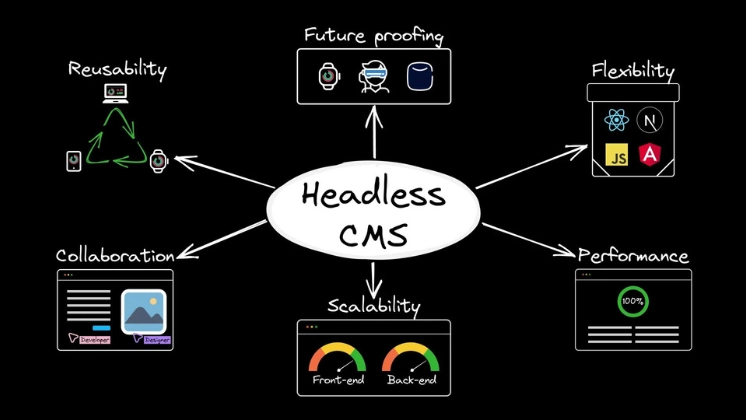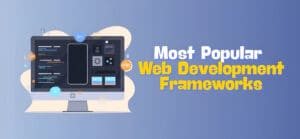The way we build digital experiences is evolving rapidly. Businesses are no longer focusing only on websites; they now need apps, voice assistants, and even smart devices that deliver a unified experience. Traditional content management systems (CMS) are struggling to keep up with these demands. That’s why the Headless CMS model is becoming the foundation for the next generation of web experiences.
By 2026, Headless CMS platforms are leading the charge in providing faster, more flexible, and scalable solutions for modern digital products. Let’s explore what makes this technology so important for the future of web development.
What Is a Headless CMS?
A Headless CMS is a modern content management system that separates the backend (where content is stored and managed) from the frontend (where content is displayed).
In a traditional CMS like WordPress or Drupal, content and design are connected in one system. This means your website’s layout and the content inside it are dependent on each other. While this works for simple websites, it limits flexibility when you want to deliver content across different platforms like apps, smart TVs, or wearable devices.
A Headless CMS solves this problem by storing content separately and sending it via APIs (Application Programming Interfaces) to any platform you choose. Whether it’s a website, mobile app, or smartwatch, the same content can be reused everywhere without duplication.
Simply put, a Headless CMS focuses on content first — letting you manage information independently from how it’s presented.
How Does a Headless CMS Work?
Here’s how the process looks step by step:
- Content Creation: Content teams create articles, images, and videos in the CMS dashboard.
- Content Storage: The CMS saves this content in a structured database, often in a JSON format.
- Content Delivery: APIs connect the CMS to different frontends, such as web apps or mobile interfaces, to display the content dynamically.
This separation gives developers the freedom to use any frontend framework (React, Angular, Vue, etc.) while content teams work independently in the backend.
Benefits of Using a Headless CMS
1. Superior Speed and Performance
Speed is crucial in today’s digital world. A headless CMS boosts website performance by delivering content through fast APIs instead of heavy server-side rendering. Users experience quicker load times, better navigation, and improved SEO rankings.
2. Unmatched Flexibility Across Devices
In 2026, audiences consume content on various devices — from smartphones to VR headsets. A headless CMS allows you to create content once and distribute it seamlessly across all platforms. This “create once, publish everywhere” model ensures consistent branding and messaging.
3. Future-Proof Technology
Technology changes quickly. New frameworks and platforms appear every year. A traditional CMS often requires complete migration to stay updated, but a headless CMS doesn’t. You can switch or upgrade your frontend technology anytime without touching your stored content.
4. Stronger Security
Since the backend (CMS) is separate from the frontend (user-facing website), hackers have fewer entry points. This separation minimizes vulnerabilities and enhances data protection — making a headless setup more secure than traditional systems.
5. Improved Team Collaboration
Developers and content creators can work simultaneously without blocking each other. Writers focus on creating engaging content, while developers design and optimize the user interface independently. This parallel workflow increases productivity and speeds up project delivery.
6. Scalability for Growing Businesses
As businesses expand globally, their content demands grow too. A headless CMS scales effortlessly to handle large amounts of traffic, multiple languages, and localized content without slowing down performance.
Why Headless CMS Is the Future of Web Development in 2026
By 2026, web development is all about speed, personalization, and multi-channel delivery. Users expect smooth experiences whether they’re browsing on a desktop, shopping through a mobile app, or interacting via voice assistants.
Traditional CMSs can’t handle this level of flexibility because they’re tightly bound to specific templates and technologies. A Headless CMS, on the other hand, adapts to changing trends easily.
It supports integration with AI, machine learning, and automation tools, allowing brands to deliver personalized experiences. It also works well with IoT (Internet of Things), AR/VR, and voice technology, giving businesses the power to innovate continuously.
This adaptability makes a Headless CMS not just a tool, but a long-term investment for future-ready digital strategies.
Popular Headless CMS Platforms in 2026
Here are some top-performing Headless CMS solutions shaping the industry:
- Contentful: A popular enterprise CMS offering strong APIs and scalability.
- Strapi: Open-source and developer-friendly with extensive customization options.
- Sanity: Known for real-time collaboration and flexible content structures.
- Hygraph (formerly GraphCMS): Focuses on GraphQL-based APIs for high-speed data delivery.
- Storyblok: Combines visual editing with a true headless backend for both marketers and developers.
These platforms continue to evolve, introducing AI-powered features, automated workflows, and improved content delivery speeds.
Challenges of Adopting a Headless CMS
While the benefits are impressive, switching to a headless CMS requires technical expertise. Developers need to set up APIs and connect multiple systems, which can initially increase setup time and cost. Additionally, marketers may need some training to adapt to the new workflow.
However, once implemented, the long-term advantages — speed, flexibility, and scalability — easily outweigh these early challenges.
The Future Is Headless
The internet in 2026 is driven by user expectations for fast, personalized, and seamless digital experiences. The Headless CMS provides the architecture needed to meet these demands.
By separating content from presentation, it gives businesses the agility to deliver content anywhere — across web, mobile, and emerging technologies — without being tied to a specific framework.
Organizations adopting headless CMSs today are building strong foundations for tomorrow’s innovations. Whether you’re a startup or an established brand, this approach empowers your team to stay ahead of digital trends.
Final Thoughts
The shift toward a Headless CMS is more than a technological upgrade — it’s a revolution in how we create and share digital content. It empowers businesses with speed, flexibility, and scalability, making it the clear choice for the future of web experiences in 2026 and beyond.
If you want your digital presence to be fast, secure, and future-proof, going headless isn’t just an option — it’s the smart move forward.




